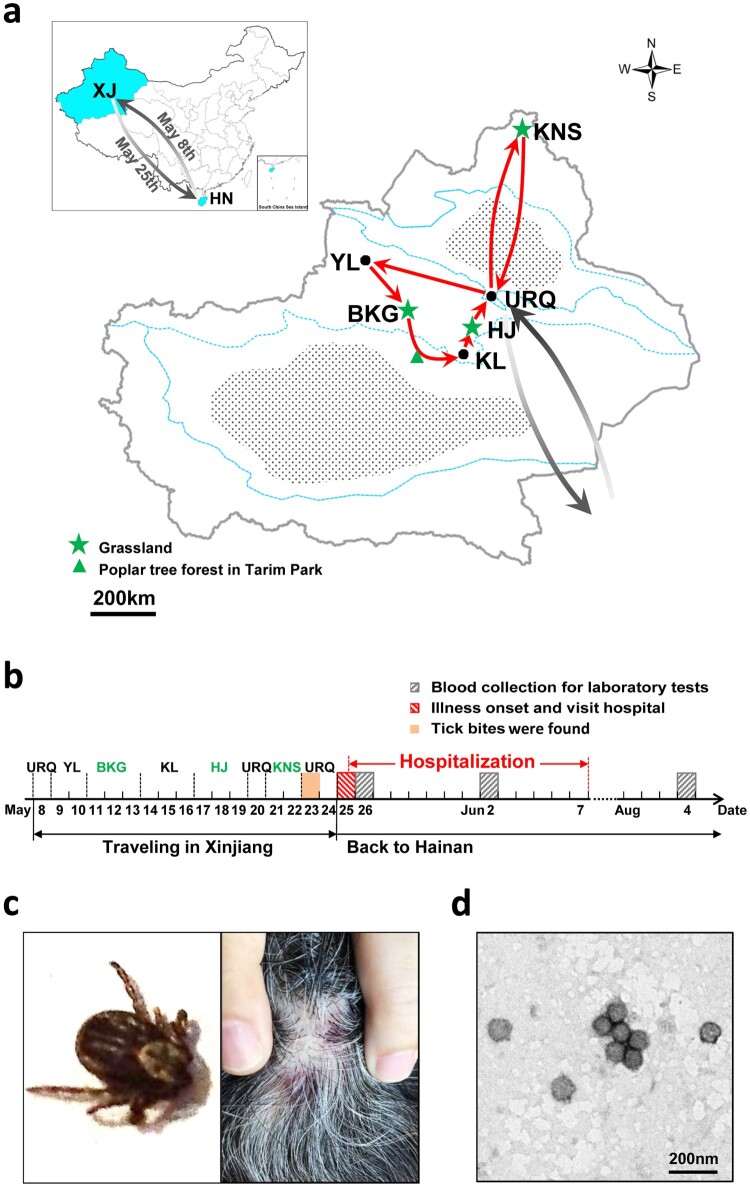Figure 1.
(a) A map presenting the patient’s travelling routes in Xinjiang and (b) the timeline of important events before illness onset and during hospitalization. The green star represents the grasslands and the green triangle indicates the location of poplar tree forest. KNS, Kanas resort; URQ, Urumqi City; HJ, Hejing County; KL, Korla City; BKG, Bayanbulak Grassland; YL, Yuli County. XJ, Xinjiang Uygur Autonomous Region; HN, Hainan Province. (c) The images of one tick found from the patient’s hair (left) and the papules noted on her scalp (right) were taken by using a mobile phone (HUAWEI EVA-AL10). (d) SFTSV particles observed by negative staining electron microscopy. Bar, 200 nm. (e) The maximum likelihood phylogenetic trees were created based on the complete sequences of the L (left), M (middle) and S (right) segments, respectively. The branches of genotypes are indicated by colours. The isolated virus strain XJ/HN2017 is labelled with a red solid circle. Trees were constructed using Mega 5.0 and tested by bootstrap method of 1000 replicates. Bootstrap values >50% are shown at each node.


